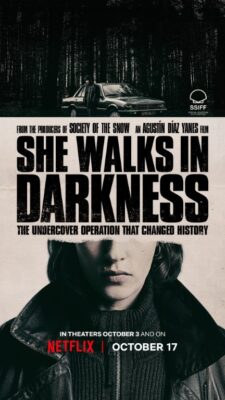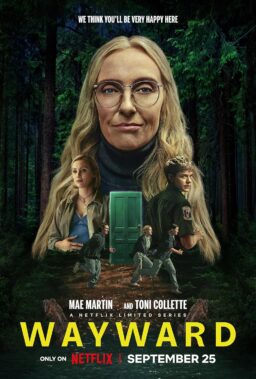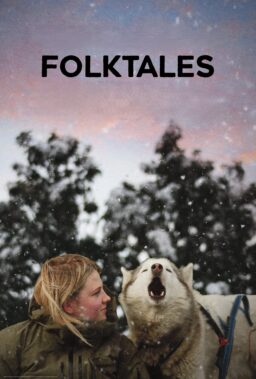Roger Corman Eats a Club Sandwich, or, Portrait of the Artist as a Boy Wonder Turned 41.
Corman wears a blue blazer, unbuttoned, gray flannel slacks and his Old school tie (Balliol College, Oxford University, English literature). His legs extend in, a straight line to the point where his heels dig into the carpet. One hand is thrown over the back of his chair. As the scene opens, he is eating a club sandwich with the other hand.
“If not the darling of the critics, then at leasttheir mascot,” he says, dictating an imaginary headline.
Since 1956, Roger Corman has made more movies than anybody else. In 1959 alone, he made “Not of this Earth” and ”It Conquered the World” and “Attack of the Crab Monsters” and “The Day the World Ended” and “The Undead” and “Rock all Night” and “Shark Reef” and “Naked Paradise” and, “The Gunslinger” and a couple more.
He has also made “Raven” and “The Intruder” and “The Wild Angels,” and it is for these three, rather than the other 47 (not counting his 90 credits as a producer), that Corman is best known. They’re even beginning to turn up at film festivals. But he made the others too, during a decade as American-International’s whiz kid director of low-budget exploitation films, and he isn’t ashamed of them. They were his apprenticeship.
In one movie, “The Terror,” starring Boris Karloff, he shot all of Karloff’s scenes in two days to save on the payroll. Then when he got into the cutting room with his film, he realized to his horror that his horror film made no sense. Karloff was gone. What to do? Corman called in two of the bit players, shot them in close-up (the sets had already been torn down or had fallen down), and had one ask the other: “Now tell me what all this means.” And then the other one did. Along the way, working quickly and improvising a lot of his scenes. Corman developed a distinctive, personal without thinking much about it. Now, when he is beginning to get more money to make better movies, Corman is ready.
“You know,” he said wonderingly, “the budget for ‘The St. Valentine ‘s Day Massacre‘ was over $3,000,000. That’s about 600 per cent more than the next most expensive movie I ever made.”
That would probably have been “The Wild Angels,” budgeted at around half a million and starring Peter Fonda, Sinatra and members of the Venice (Calif.) branch of Hell’s Angels. Corman based his script on actual experiences of the Angels, used a semi-documentary approach, filmed on location, mixed equal parts of “Scorpio Rising” and “Drag Strip
Dragnet,” and cleaned up. “Wild Angels” has grossed about $6,000,000 so far and was invited to the Venice (Italy) Film Festival last year, where the European critics found it to be an interesting modification of the cinema verite school, adapted to commercial purposes.
“It all goes to show you.” Corman said.
The success Of “Wild Angels” helped remove the exploitation picture stigma from Corman, and 20th Century-Fox gave him the $3,000,000 and let him take 48 whole days to film “The St. Valentines Day Massacre.” True to his training, Corman brought it in two days before deadline and didn’t spend quite all the money.
The film, starring Jason Robards, had its world premiere here last Friday at the Roosevelt Theater. Corman’s next film, just out of the cutting room and scheduled for fall release, is another Peter Fonda teeny-junkie special. “The Trip,” and three fourths of it is a hallucination, Corman says.
One of the interesting aspect of Corman’s career is that he really has become the mascot (if not the darling) of the critics while making what are undeniably some of the worst movies ever made (his first, “Monster from the Ocean Floor,” budgeted at $20,000 and shot during a long weekend, set the pattern). At places like Berkeley, Harvard, UCLA and the University of Chicago, where the hard core filmniks congregate, a bad old Corman flick is more highly prized than many a Frankenheimer or Zinnemann opus.
The French film critics, who have a word, for everything, have a word for this phenomenon: It is an example of the “auteur” theory of directors. To get to be an auteur, you must have a very personal, distinctive, exciting style. If you have it, it doesn’t matter how much your movies stink. At least they’re always interesting, just because you made them. Some of the other directors about whose ears the auteur theory has been bandied are Alfred Hitchcock, Howard Hawks, John Ford, D. W. Griffith, Charlie Chaplin, John Huston and naturally, although decreasingly, Otto Preminger.
Corman says he doesn’t know if he really qualifies in this pantheon, and he’s not sure he cares.
“I’m too busy to get all hung up on what I’m doing.” he said. “What I’m trying to do now is get the feel of realism onto the screen. I stay away from studio work whenever I can. ‘Wild Angels,’ for example, was filmed entirely on location. I’m working toward a semi-documentary style in narrative movies, trying to make the story look like a film of an actual event.” For that reason, Corman said, he was hesitant at first about doing “Wild Angels” in color.
“For years and years all films were in black and white,” he said “and the bulk of serious art film, and documentaries are in black and white to this day. When Technicolor first came in it was pretty garish, and people began to identify it in their minds with musical comedies.
“But color, properly handled, can make a film seem more realistic, not less. It’s very difficult, but it can be done. Look what Antonioni did in ‘Blow-Up.'” For “The St. Valentine’s Day Massacre,” Corman said, he made a deliberate attempt to keep the color under control. “I worked a lot in browns and grays. I didn’t go in for a lot of flashy color. And in the two flashbacks, I tried something new. I filmed them in color and then misted the color by putting a black and white overlay on the picture.”
“This has been done in the other direction lots of times. In ‘A Man and a Woman,’ for example, there are those scenes in yellow and blue and everything. And in some of my old Edgar Allen Poe horror films I used to shoot in black and white and then throw a bloody red overlay on the climactic scene. But doing it the other way, black and white on top of color, is a lot more tricky. I hope I pulled it off.”
Corman said he tried in other ways to make “Massacre” seem like a realistic and historically accurate picture. “We thought at first of shooting on location, up around North Clark Street. But Chicago today has very little relationship to the Chicago of Capone’s era. You’d have trouble keeping the TV aerials and new car’s off the screen. So we finally decided to go out to the back lot at 20th and recreate some Chicago streets as closely as we could.
Corman said his film carefully avoids any attempt to glamorize Al Capone and his era. “We were trying to show the kind of a world in which a massacre like that would be possible,” he said.
Corman said he wrote an epilog to the film, underlining the message, even though he’s ordinarily against preaching.”
“I believe every serious film should have a message of some kind,” he said. “But it ought to he done subtly. I’m somewhere in the, liberal ranks politically and ‘Wild Angels’ was definitely, a liberal picture. But I let the material speak for itself. I was trying to make a statement about a definite subculture in our society. There are a lot of people between, say, 25 and 40 who are stupid and uneducated and gross, most of all completely bewildered by the high degree of organization and ambition needed to survive in America today. By acting the way the Hell’s Angels do, they drop out of society in a violent and exaggerated way.”
Corman said he doesn’t think a film should necessarily be objective. “In ‘Massacre,’ for example, I think the point comes across very plainly that the power of the Mob is possible only because the people and the police permit it.
“You can’t tell me that the police and the federal government couldn’t wipe out the Mob it they really wanted to. I mean, after all, we did defeat Hitler. But the cops absorb most of their effort in fighting two-bit crime, like traffic violations. And they leave the Mob alone.”
Isn’t Corman, as the fearless film opponent of gansterism, leaving himself open for possible revenge?
“I doubt it,” he said, and shrugged. “Anyway, the Hell’s Angels are already sworn to kill me. Compared to them, the Mob would look good.”











